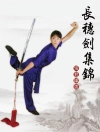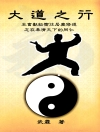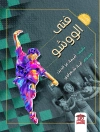Tai Ji Foundations contains a collection of written works from five generations of Wu Hao Tai Ji Quan masters. Although Wu Hao Tai Ji Quan is the least well known of the major schools of Tai Ji, many of the foundational texts of all schools of Tai Ji had their origin in the writings of the masters of the Wu Hao tradition. These include Wu Yu Xiang’s collection of Wang Zong Yue’s Tai Ji manuscripts; Wu Yu Xiang’s own writing explaining the Thirteen Principles; and Li Yi Yu’s Five Keywords Formula. These texts provide a wealth of knowledge, both theoretical and practical, that is known to the entire Tai Ji community, regardless of what style is being studied. They suggest ways to approach some of the more difficult and intriguing Principles such as: ‚Leading four ounces to defeat a thousand pounds‘; ‚Qi sinks to the Dan Tian‘; ‚Leading to emptiness, borrow force to strike back‘, and many more. The information was first written down in the late 1800’s and shared with the Yang family. It was later published by Hao Shao Ru in the 1960’s in his book Wu Style Tai Ji Quan. It has since been widely adopted by the wider Tai Ji community and by practitioners of other internal martial arts. Even as the principles become better known, very few know the original source of the teachings. Sometimes these teachings might even be wrongly attributed to other authors and are often quoted without knowledge of the full context. This book attempts to rectify this situation by publishing the older classics in their entirety in both Chinese and English. This will allow Tai Ji enthusiasts to appreciate the original works as well as help them gain new insights for their own personal practice. This book also includes three generations of the Hao family’s innovative learning concepts as they pertain to the art of Tai Ji Quan. I have practiced Wu Hao Tai Ji with the current Master, Liu Ji Shun for well over a decade and hope this book will provide an insider’s view that is closer to the founders‘ original intent in its translation and commentary.
Inhaltsverzeichnis
Table of Contents
Acknowledgements
Introduction by Pang Chao Sun
Purpose
Understanding Wu Hao Tai Ji Quan
Foreword by Hao Shao Ru
Chapter One
Theory of Tai Ji Quan
The Concept of Tai Ji Quan
Yin Yang Theory of Tai Ji Quan
Wu Ji and Tai Ji: The Separation and Unification of Yin and Yang
Yin and Yang: Opposing and Complementary
Distinguishing Yin and Yang
Integration of Yin and Yang
Transformation of Yin and Yang
Understanding Tai Ji Theory
Commonality and Particularity
Importance of Practice
Chapter Two
Features of Wu Style Tai Ji Quan
Process of Learning Wu Style Tai Ji Quan
Distinguishing Attributes
Wu Style Tai Ji Quan’s Body Principles
Importance of the Body Principles
Body Principles (Hao Yue Ru)
Chapter Three
Inner Workings of Wu Style Tai Ji Quan Practice
Yi and Li (Intention and Force)
Spaciousness, Relaxation, Roundness and Liveliness
Methods of Folding
Methods of Transformation
Three Insubstantial Embracing One Substantial
Five Bows
Tai Ji Quan Breathing: Gather and Release
Wu Style Tai Ji Form Practice Guidelines (Hao Yue Ru)
Essence of the Practice
Core of the Form Practice
Chapter Four
Wu Style Tai Ji Quan Forms
Explanations of Form Sequence and Illustrations of Body Principles
Definition of Body Principles in the Illustration
Wu Style Tai Ji Quan’s 96 Form Names
Clarifications of Illustrations and Indicators
Wu Style Tai Ji Forms with Explanations
Chapter Five
Wu Style Tai Ji Quan Striking Hands Practice
Striking Hands Basic Practice Methods
Reciprocal, Interconnected Relationship between Form and Striking Hands
Wu Style Tai Ji Quan Method of Striking Hands (Hao Yue Ru)
Leading to Emptiness, Borrow Force to Strike Back
Letting Go of Self, Follow Others (Hao Yue Ru)
Four Characters Secret Formula Explanation
Wu Style Tai Ji Quan Striking Hands Demonstration Illustrations
Chapter Six
Manuscripts by Wang Zong Yue, Wu Yu Xiang, and Li Yi Yu
Mountain Right Wang Zong Yue Tai Ji Quan Treatise
Thirteen Principles Form (Wu Yu Xiang and Li Yi Yu)
Body Principles (Wu Yu Xiang)
Sabre Methods (Wu Yu Xiang)
Spear Methods (Wu Yu Xiang)
Thirteen Principles, Also Called Chang Quan (Wang Zong Yue)
Thirteen Principles Practice Sonnet
Explanations of Thirteen Principles Sonnet (Wu Yu Xiang)
Striking Hands Sonnet (Wang Zong Yue)
Striking Hands Releasing Sound (Wu Yu Xiang)
Tai Ji Quan Abbreviated History (Li Yi Yu)
Five Key Words Formula (Li Yi Yu)
Discharge Secret Formula (Li Yi Yu)
Form and Striking Hands Practice Clarifications (Li Yi Yu)
Four Characters Secret Formula (Wu Yu Xiang)
Epilogue
Wu Style Hao Family Tai Ji Quan History
Master Liu Ji Shun’s Contributions to Wu Hao Tai Ji Quan
Finding the Flow Exercises
Wu Hao Demonstration Form
Wu Hao Fast Form
Wu Hao Tai Ji Sword Form












